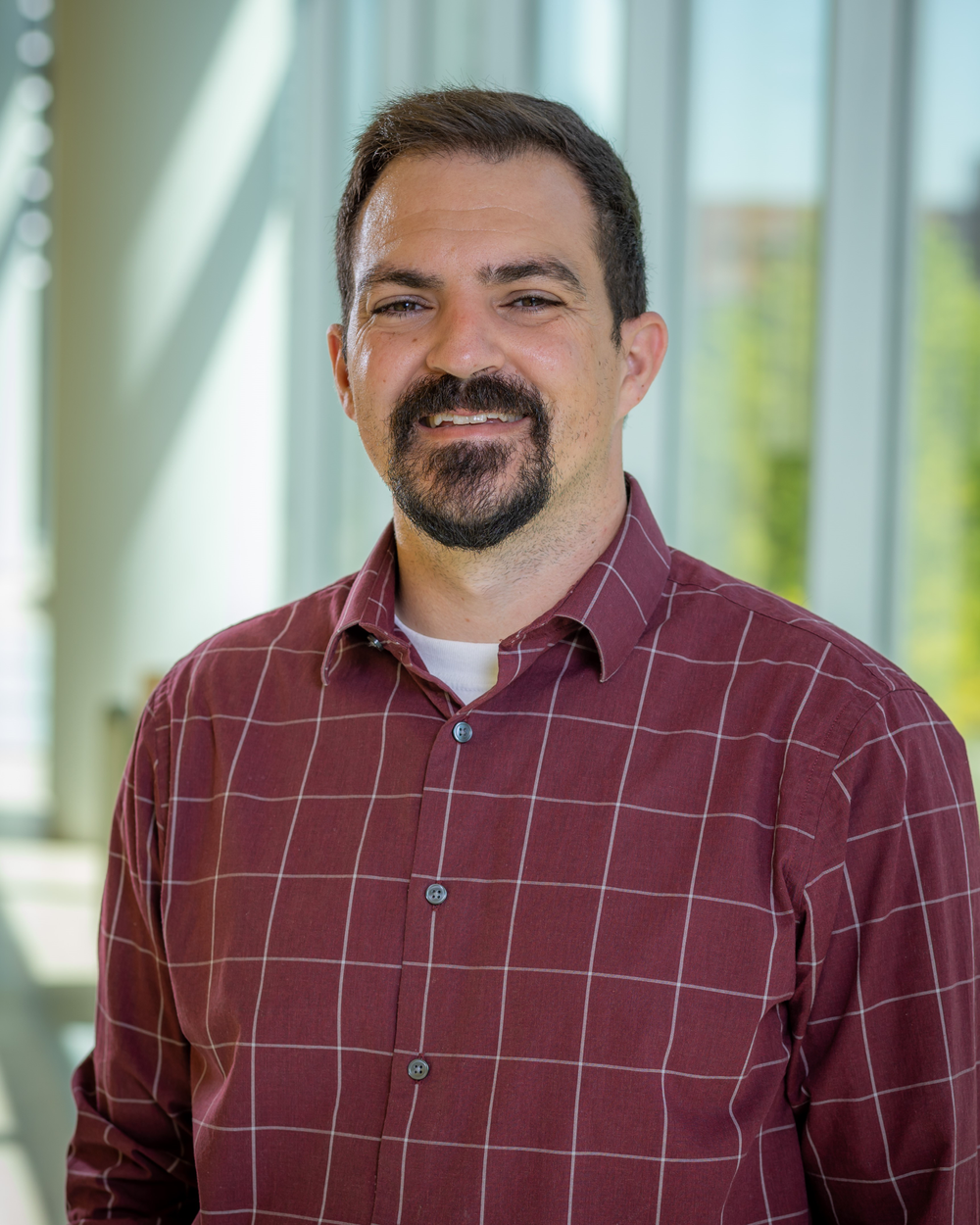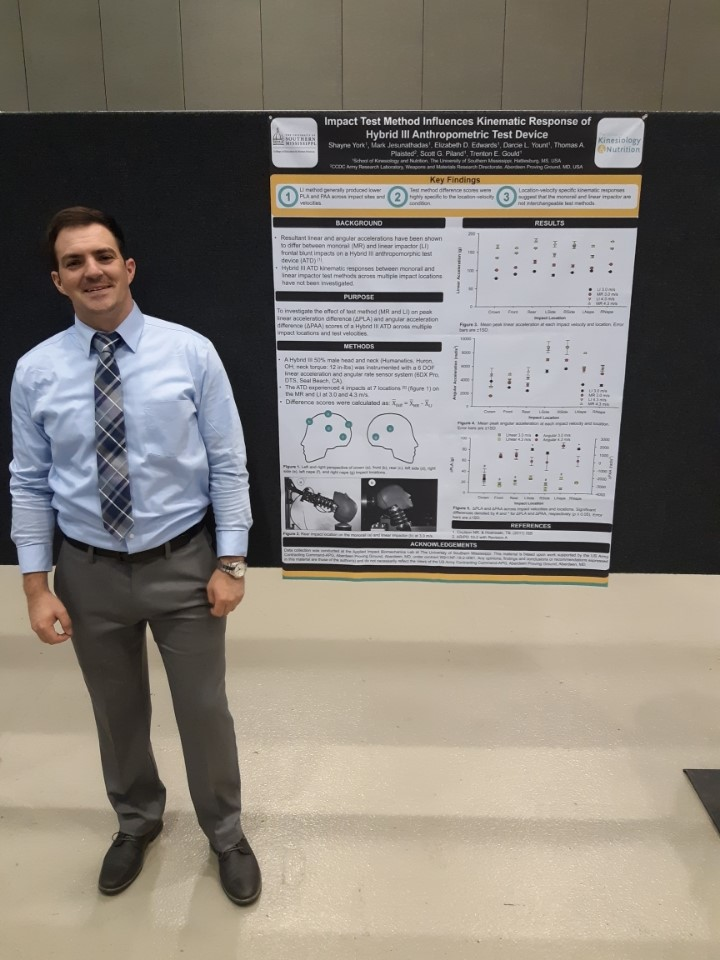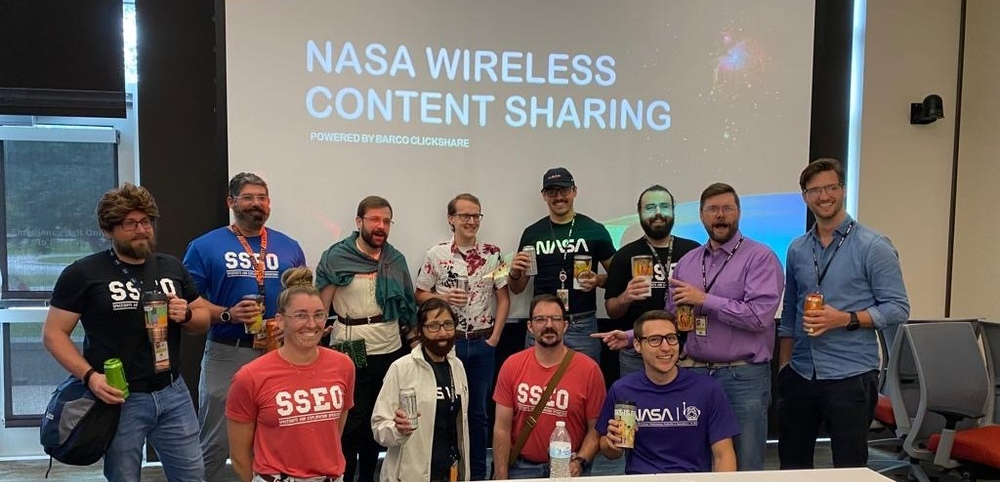The People of Johnson: Meet Shayne York, Human Health & Performance Research Coordinator
What do kinesiology and spaceflight have in common? A lot, actually, when you are helping to develop health protocols for crewed missions to Mars and beyond.
Shayne York, a research coordinator with the Human Health and Performance Directorate (HHP), did not expect to end up at NASA when he completed his degree in kinesiology. A high school and college athlete, York planned to become a strength coach, but then, with the help of his undergraduate mentor, he discovered that he enjoyed conducting and coordinating scientific research. That mentorship would continue to influence his career more than a decade later.

After graduation and a brief foray into the working world, York restarted his academic pursuits by completing graduate programs in exercise physiology at the University of Toledo in Toledo, Ohio and biomechanics at the University of Southern Mississippi in Hattiesburg, Mississippi. The latter experience involved a partnership with the U.S. Army to study forces experienced by the head and neck during blunt impacts while wearing different helmets. It was his kinesiology background, as well as his course work in statistics, that propelled York to the University of Colorado Anschutz Department of Orthopedics in Aurora, Colorado, where he spent two years helping to analyze patient-reported outcomes data.
When York was ready to take the next step in his career, he began looking in the Houston area to be closer to friends. It was the longstanding impact of his undergraduate mentor that nudged him to look for opportunities at NASA’s Johnson Space Center. “My mentor had done some work in partnership with NASA, and I liked the idea of following in her footsteps in some way,” he said. “I never really knew how I would go about it, but I always kept an eye out as I was figuring out my own path.” York added that he had little exposure to the space program other than watching “Bill Nye the Science Guy” and other science-focused TV shows, even though he grew up in the same part of Ohio that former NASA flight director Gene Kranz used to call home. “But sometimes that’s all it takes to gain interest and curiosity,” he said.

York now applies his kinesiology knowledge to work underway in the Human Physiology, Performance, Protection, and Operations (H-3PO) Lab. He is part of the lab’s Spacesuits and Exploration Operations (SSEO) team, which is helping to develop crew health protocols to prepare for spacewalks, and systems for monitoring crew health before, during, and after a spacewalk, among other responsibilities. Most of York’s work supports the team’s Mars Campaign Office projects that focus on developing crew health and performance models to predict the crew member’s state and ability to complete spacewalk tasks on the planet’s surface. He also assists with suited testing.
“I’m helping the biomedical researchers and subject matter experts determine what we want and need to measure and why, and then support the efforts in a variety of ways,” York said. “Being able to speak the language of what we are testing is very helpful.” He said his work can include anything from drafting test documentation and ordering test materials to conducting the actual test and data collection. York said that serving as a test operator has been his favorite role so far. “The questions we are asking and the investigations we are doing can be done in few other places – if any,” he said.
York also enjoys contributing to SSEO’s Crew State and Risk Model and Personalized EVA Informatics and Decision Support (PersEIDS) projects. The former involves developing a set of mathematical models that could accurately infer and predict a crew member’s physiological and cognitive states during an EVA. PersEIDS seeks to create a biomedical decision support system from those models that could increase the crew’s autonomy during future EVAs – something that may be necessary on Mars missions due to the communications delay with the Mission Control Center.

York has only been a contractor at Johnson for about eight months, but he has already made an impression on his teammates. “Shayne continually goes out of his way to brighten people's day and help with workload anywhere he can,” said one colleague. “He routinely assists with problem solving and troubleshooting on a myriad of projects, and many of the things we do in the lab likely wouldn't be possible without his assistance.”
Despite being relatively new, York can already appreciate the breadth of his colleagues’ experience and Johnson’s collaborative culture. “You can bring things to the table and people are super receptive – they want to get in the weeds with you,” he said. “I’ve also learned that asking questions improves our work and the mission. It helps make everyone better.” York also observed that “literally everyone has a unique skill set,” and that all he has to do is ask and someone will step up to help.
York encourages others to find as much satisfaction in small successes as they do in larger accomplishments, because little steps forward make the next big achievement possible. “Be patient with the process and enjoy it,” he said. “Progress can often feel slow or have seemingly insurmountable steps that can leave you frustrated. It’s important to enjoy yourself and your achievements along the way.”







